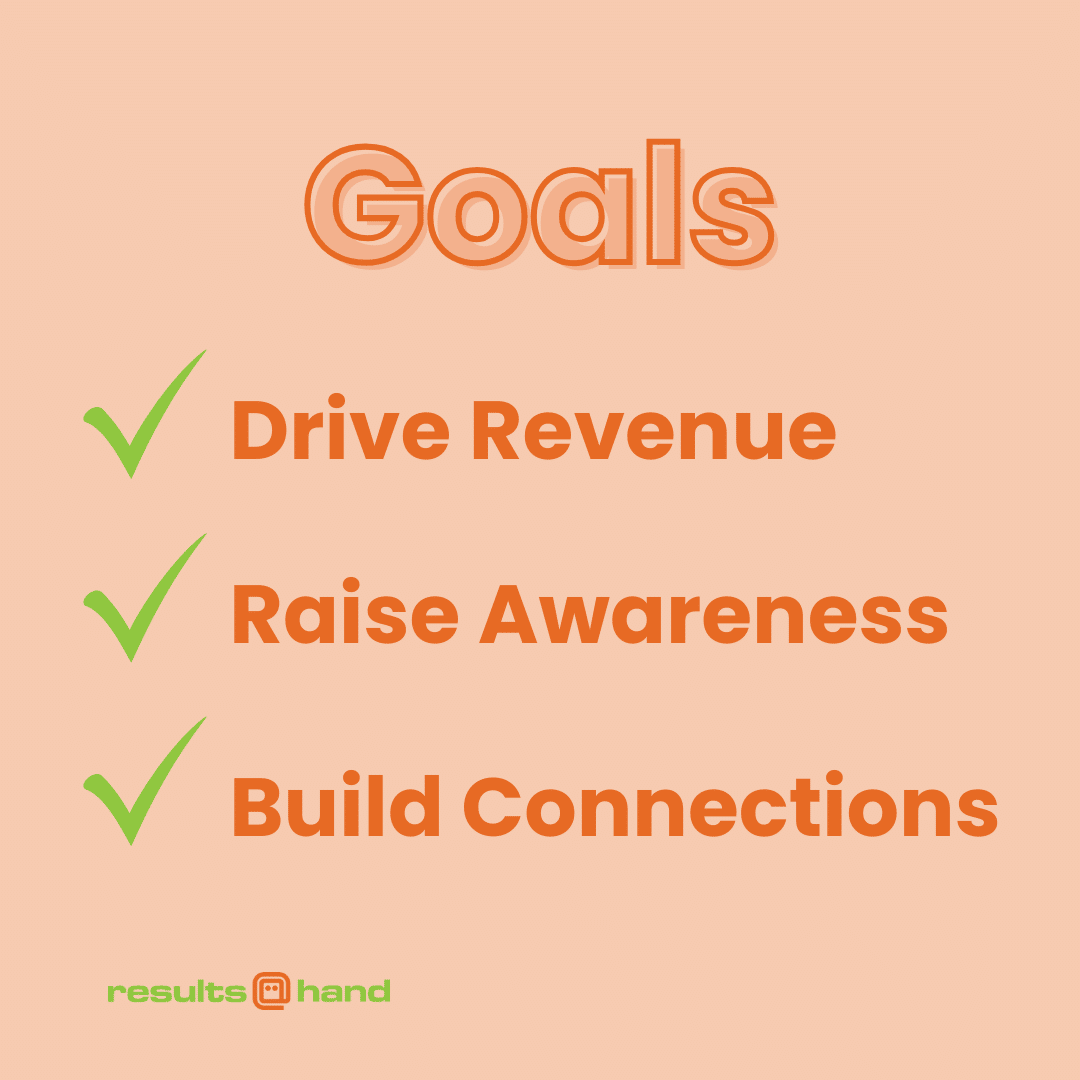How to Choose Between an In-Person & Virtual Nonprofit Event

If your nonprofit has been operating for a few years, you’ve probably hosted at least one fundraising event. Events bring your organization’s community together, spread awareness of your mission, and—when planned strategically—raise significant amounts of revenue for your programs and projects.
With the continued rise of virtual nonprofit events, you might be wondering whether they’re the best choice for your next event or if you should stick to a more traditional in-person format. The answer is it depends—there is no one-size-fits-all approach to fundraising event planning!
To help you decide, let’s break down four key event planning considerations and compare and contrast how each one applies to in-person vs. virtual events.
Past Event Data
 Like with most of your nonprofit’s activities, the best way to make decisions about event planning is to review the data you collected during your previous events. This process will be most effective if you’ve hosted at least one in-person and one virtual event before. However, if you only have data from one type of event, you can still analyze it to decide if the format worked or if you should try something new.
Like with most of your nonprofit’s activities, the best way to make decisions about event planning is to review the data you collected during your previous events. This process will be most effective if you’ve hosted at least one in-person and one virtual event before. However, if you only have data from one type of event, you can still analyze it to decide if the format worked or if you should try something new.
Look through your nonprofit’s database for the following information on past events:
- Attendance data—not only the total number of attendees, but also which supporter segments were most and least represented at each event.
- Fundraising totals and return on investment (ROI).
- Donor acquisition rate, i.e., how many attendees were engaging with your organization for the first time at your event.
- Donor retention rate, or how many participants in one event returned for the next one.
- Participant satisfaction, measured via post-event surveys.
Let’s say you’re planning your nonprofit’s fifth annual silent auction, which you’ve previously hosted in-person twice and virtually twice. When analyzing your data from all of these events, you find that:
- Virtual auctions had higher attendance totals which included supporters from various age groups and giving levels, while older, wealthy donors comprised the majority of attendees at in-person auctions.
- Raw fundraising totals for in-person auctions were higher, but ROI was better for virtual events since you spent less on them upfront.
- Your organization acquired more donors through virtual auctions but retained more donors between in-person auctions.
- Participant satisfaction was slightly higher for virtual auctions than in-person ones.
In this case, the data suggests that a virtual auction would be the better option for your organization. However, the past doesn’t always reflect the present, so previous event data should be just one factor in your decision.
Goals
 Along with past data, your nonprofit’s current priorities should inform your event’s overarching goals. Once you’ve set these goals, determine which event format will more effectively help you achieve them.
Along with past data, your nonprofit’s current priorities should inform your event’s overarching goals. Once you’ve set these goals, determine which event format will more effectively help you achieve them.
According to Double the Donation’s nonprofit events guide, the most common fundraising event goals are to:
- Drive revenue. Virtual events often meet this goal more efficiently—when upfront costs are lower, you get to put more of the funds you raise toward mission-related initiatives. However, this isn’t universally applicable because attendance also affects your event’s revenue generation potential.
- Raise awareness. Both in-person and virtual events spread the word about your organization’s mission, but they do so in different ways. Virtual events raise awareness broadly since they can reach beyond your nonprofit’s local community, but in-person events allow participants to understand your cause more deeply through organic conversations with staff members and other supporters.
- Build connections. The aforementioned organic conversations that happen more readily at in-person events make this the preferred format for connecting with supporters. While it isn’t impossible to engage remote attendees in this way, it often takes more work to do so. Plus, different formats may attract different audiences, so consider which supporter segments you most want to connect with during your event.
Your fundraising event can accomplish one, two, or all three of these goals. Prioritize them as you plan, and choose your format according to your most important goal.
Event Type
There are countless kinds of fundraising events your nonprofit could host depending on your supporters’ preferences and available resources. Some are better suited to in-person or virtual formats, while others could easily go either way.
 Here are some examples of popular fundraising events and the best formats for each one:
Here are some examples of popular fundraising events and the best formats for each one:
- Auctions. According to Winspire’s auction planning guide, silent auctions work in any format, while live auctions are easier to host in person because bidding takes place in real time.
- 5K race. Virtual 5Ks are more flexible since supporters can run or walk them anywhere, but in-person races are more competitive and promote accountability for participants to complete the full distance.
- Golf tournament. This event is better to host in person so you can reserve one golf course where everyone plays the same 18 holes for the same fee.
- Lecture or panel discussion. These are best to host as webinars—their main goal is usually broad mission awareness, and you can invite speakers from out of town without making them travel.
If you’re unsure how to adapt a certain type of event to a particular format, do a quick Google search for resources, or contact other nonprofits who’ve hosted the same kinds of events and may be willing to share some insights!
Budget
 It’s no secret that in-person events are almost always more expensive than virtual ones. Between venue rentals, signage, refreshments, seating, sound equipment, and any other materials you want to take your event to the next level, you’ll need a decent budget to host an in-person gathering that your supporters will enjoy. However, virtual events also have associated costs—most notably fundraising software fees and marketing materials.
It’s no secret that in-person events are almost always more expensive than virtual ones. Between venue rentals, signage, refreshments, seating, sound equipment, and any other materials you want to take your event to the next level, you’ll need a decent budget to host an in-person gathering that your supporters will enjoy. However, virtual events also have associated costs—most notably fundraising software fees and marketing materials.
For both types of events, there are ways your nonprofit can offset some expenses and make your budget more flexible, including:
- Securing fiscal sponsorships from local businesses
- Negotiating nonprofit discounts on venues and equipment
- Leveraging free nonprofit marketing tools to promote your event
- Requesting in-kind donations of goods like auction items or services like catering
Even with these offsets, you’ll still have an upper threshold for how much you can spend upfront, which may make or break your ability to host an in-person event.
If you still can’t decide between an in-person and virtual event, there is a third option in between the two: hybrid events. Although it can be challenging to manage both sides of the event at the same time, hybrid events combine the broad reach of virtual events with in-person events’ potential to create connections—essentially the best of both worlds! Consider experimenting with this format as well and adding its results to your data analysis to get a better idea of what works for your nonprofit.
Guest Author
David White – Director of Nonprofit Sales at Winspire
David White is the Director of Nonprofit Sales at Winspire. The Winspire team is dedicated to supporting the nonprofit community by providing the best service and unique auction item experiences for their events. Winspire has helped over 75,000 nonprofit auctions across North America increase their revenue through events of all sizes.

